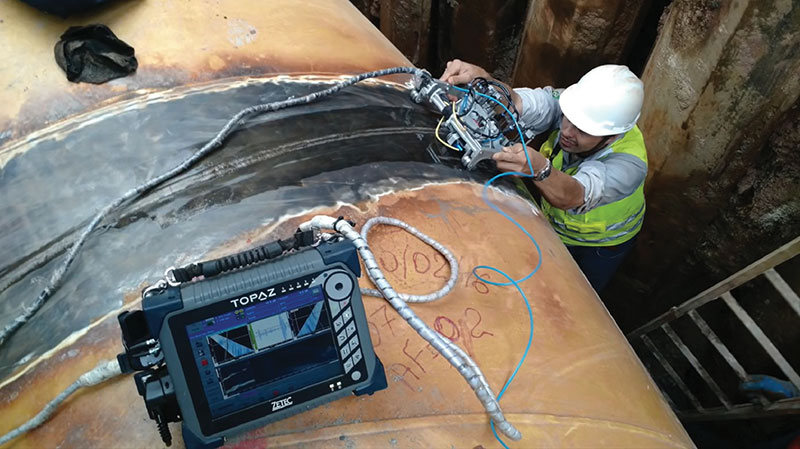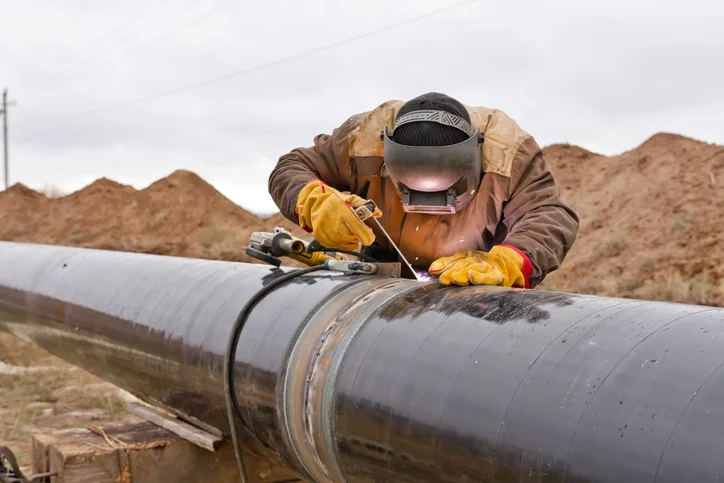Precision Matters: Trusted Pipeline Welding Inspection Solutions for Important Tasks
Precision Matters: Trusted Pipeline Welding Inspection Solutions for Important Tasks
Blog Article
Comprehensive Review of Pipeline Welding Assessment Procedures
In the realm of pipe construction, making certain the integrity and security of welded joints is paramount. Pipe welding assessment treatments play a critical function in ensuring that welded connections fulfill strict industry requirements and specifications. From thorough pre-welding evaluations to thorough post-weld assessments, a well-defined inspection process is essential for preserving the structural strength of pipes. Recognizing the details of welding assessment procedures is not just a governing demand but also a fundamental facet of maintaining the reliability of these important frameworks.
Pre-welding Examination Preparations
Before commencing the welding process, thorough pre-welding assessment prep work are important to ensure the honesty and quality of the weld joint. These preparations involve a careful examination of the materials to be welded, the welding tools, and the workplace. First of all, the products should be examined for any type of defects, pollutants, or variances that could endanger the weld. This consists of checking for proper product grades, dimensions, and surface area conditions. Pipeline Welding Inspection. Additionally, the welding equipment needs to be evaluated to validate that it remains in great working problem, calibrated correctly, and appropriate for the specific welding process. Any issues with the tools should be dealt with promptly to prevent flaws in the weld. The work environment have to be evaluated for cleanliness, appropriate ventilation, and security actions to make sure a favorable setting for the welding operation. By performing extensive pre-welding assessment preparations, possible issues can be recognized and dealt with at an early stage, bring about high-quality and trustworthy weld joints.
Welding Procedure Qualification
Comprehensive pre-welding assessment prep work lay the foundation for the vital procedure of Welding Procedure Credentials, guaranteeing the honesty and top quality of the weld joint. Welding Procedure Credentials (WPQ) is a crucial action in the welding procedure that involves screening and licensing welding treatments to assure they satisfy particular standards and requirements. The WPQ process generally includes welding treatment specification growth, welding treatment credentials screening, and documentation of the results.
During welding treatment requirements growth, necessary information such as the welding process, welding products, joint style, and welding criteria are defined to produce an extensive procedure. Subsequently, welding procedure credentials screening is conducted to verify the recommended treatment's stability. This screening usually involves welding test discount coupons that are subjected to various mechanical and non-destructive examinations to analyze the weld's top quality and adherence to the specified standards.
In-process Weld Inspection
During the welding procedure, in-process weld inspection plays a critical duty in making sure the quality and honesty of the weld joint - Pipeline Welding Inspection. This type of examination involves keeping track of the welding specifications, examining the weld bead development, and finding any type of prospective defects or interruptions as they happen. By carrying out in-process weld assessments, welding operators can immediately attend to any problems that might occur, therefore avoiding more defects and ensuring that the last weld satisfies the required specs
Typical approaches made use of for in-process weld inspection consist of aesthetic examination, fluid penetrant screening, magnetic fragment testing, ultrasonic testing, and radiographic testing. Aesthetic inspection is typically the very first step while doing so, allowing examiners to aesthetically examine the weld for surface area abnormalities such as splits, porosity, or incomplete blend. Much more sophisticated methods like ultrasonic testing and radiographic screening provide comprehensive discover this info here understandings into the internal structure of the weld, ensuring that there are no surprise defects that could compromise the weld joint's toughness and integrity. On the whole, in-process weld assessment is necessary for keeping the quality and integrity of welded pipes.
Non-destructive Screening (NDT)
Non-destructive Testing (NDT) is a vital technique employed in pipe welding evaluation to examine the honesty of weld joints without creating damage to the welded framework. By making use of numerous NDT methods, examiners can evaluate the quality of welds and determine any type of defects or discontinuities that may compromise the structural sturdiness of the pipeline. Usual NDT approaches utilized in pipe welding evaluation consist of Radiographic Screening (RT), Ultrasonic Screening (UT), Magnetic Bit Examining (MPT), view publisher site Liquid Penetrant Screening (LPT), and Visual Screening (VT)
RT entails the use of X-rays or gamma rays to generate images of the inner structure of the weld, permitting inspectors to detect problems such as porosity, splits, or insufficient combination. In addition, VT includes aesthetic assessment of welds to determine any type of noticeable imperfections.
Post-weld Examination and Documentation

Documentation of post-weld examination findings is vital for keeping high quality control documents and guaranteeing conformity with industry requirements and regulations. Thorough records must include info about the evaluation methods used, the area and nature of any issues found, and any type of corrective activities taken - Pipeline Welding Inspection. Proper paperwork not just acts as a record of the weld's quality but additionally aids in future maintenance and inspection processes
Verdict

To conclude, pipeline welding evaluation treatments play a crucial function in making sure the quality and stability of welds. From pre-welding evaluations to post-weld documentation, each step is crucial in keeping the safety and effectiveness of pipes. By complying with recognized treatments and conducting detailed assessments, possible issues can be identified and attended to prior to they cause expensive fixings or failures. Generally, adherence to correct inspection protocols is essential to the success of pipe welding tasks.
From precise pre-welding inspections to comprehensive post-weld assessments, a well-defined evaluation process is necessary for preserving the architectural strength of pipelines. By conducting in-process weld inspections, welding operators can promptly address any issues that may arise, therefore protecting against more defects and making sure that the last weld fulfills the called for specs.
Typical methods made use of for in-process weld assessment include aesthetic examination, liquid penetrant testing, magnetic fragment testing, ultrasonic screening, and radiographic testing.Non-destructive Screening (NDT) is this a critical approach employed in pipe welding evaluation to assess the honesty of weld joints without creating damage to the bonded structure. Post-weld examination includes numerous techniques to evaluate the welds for issues, including aesthetic evaluation, color penetrant testing, magnetic particle testing, ultrasonic screening, and radiographic screening.
Report this page